
Friday, March 1, 2019
Tuesday, February 19, 2019
Wednesday, February 6, 2019
Saturday, February 2, 2019
Father Rutler: Infanticide in New York
 |
| Father George W. Rutler |
The mayor of a French town commissioned a statue of the rationalist Emile Zola and, intent on provocation, he ordered that the bronze for it be from the bells of a church. Similarly, Governor Andrew Cuomo chose to sign into law our nation’s most offensive abortion bill on the anniversary of the Roe v. Wade decision, to ecstatic applause in the state capitol. Then he ordered that the Empire State Building, the Freedom Tower, and the Alfred E. Smith Building in Albany be lit in pink. The ancient Caesars dressed in red as the emblem of victory; Cuomo drapes himself in pink.
Mark the ironies: The Freedom Tower is at the site of the memorial to the dead of 9/11, and listed on it are eleven “unborn babies” killed with their mothers. And Al Smith would have resigned rather than endorse infanticide.
In Orwellian “Newspeak,” just as a concentration camp was called a “Joycamp,” the killing of innocent unborn infants is sanctioned by a “Reproductive Health Act.” Now it is legal to destroy a fully formed baby one minute before birth and, should it survive a botched attempt to cut it up, there is no requirement to provide medical help. The abortionist does not even have to be a medical doctor.
The legislation was deferred over years by politicians who, if not paragons of empathy, were appalled by its excess. It has only passed because the Democrats now control both houses of the New York state legislature. Politics aside, the governor teased a religious question. Not only does he mention that he once was an altar boy, but he concluded the signing celebration by telling the legislators, “God bless you.”
Perhaps he is succumbing to the temptation that some of the senators of Rome detected as evidence of decadence: the apotheosis, or divinizing of emperors in an Imperial Cult complimentary to the traditional deities. Andrew Cuomo, over the objections of more than 100,000 petitioners, named the Tappan Zee replacement bridge in honor of his father. In the dark ages, there was a superstition that a bridge could only be safe if a sacrificial victim was buried in its foundation. There are many innocent bones that could be buried under the Mario Cuomo Bridge, and his son perpetuates the cult.
Doctor Edward Peters, one of our nation’s most venerable canon lawyers, has written: "Penal jurisdiction in this matter rests with the bishop of Albany (as the place where some or all of the canonically criminal conduct was committed, per Canon 1412), and/or with the archbishop of New York (as the place where Cuomo apparently has canonical domicile, per Canon 1408)."
These matters are beyond the ken or jurisdiction of a parish priest, but it is clear that it is not sufficient for Churchmen blithely to suppose that an adequate response to the massacre of innocents by the inversion of reason is nothing more than an expression of “profound sadness.”
These matters are beyond the ken or jurisdiction of a parish priest, but it is clear that it is not sufficient for Churchmen blithely to suppose that an adequate response to the massacre of innocents by the inversion of reason is nothing more than an expression of “profound sadness.”
Sunday, January 27, 2019
Time for Bishops and Cardinals to Address a Crisis
It is long past time for Catholics to recognize that a heretical Pope has separated himself from the Church and thus does not possess the keys to the Kingdom and cannot head that of which he is no longer part. Nevertheless, only a Council of the Church can declare what is apparent to all. The "Pope" is a heretic on a number of doctrinal matters, including hell, the Immaculate Conception and the sanctity and inviolability of marriage. He has sewn confusion, division, and doubt on matters which Catholics regard as central to the deposit of faith; he routinely condemns the most faithful and observant Catholics for their "rigidity;" and he has acted like a crime boss in ignoring, lying about, excusing, and covering up widespread sin and corruption among the episcopacy and clergy. Before further damage is done to Church institutions and doctrine, we need to ask the bishops and the College of Cardinals to recognize and declare the Chair of St. Peter vacant so that a true shepherd of souls may right the ship and set the barque of Saint Peter on its true, God-given course.
The Church Fathers, previous Popes and Doctors of the Church thought it unlikely that such a state of affairs could come to pass, but prescribed how it should be addressed should the worst befall the papacy. We are well past that point.
Question of an heretical pope 1 : Common Teaching of the Church about an heretical pope
Doctrina Communis
A public heretic cannot retain the papacy
List of most known authorities
Important catholic principle :
When a teaching has been learned “everywhere, always and by everyone”, it belongs to the Revelation and is infallible. (See here about the Commonitorium of St Vincent de Lerins)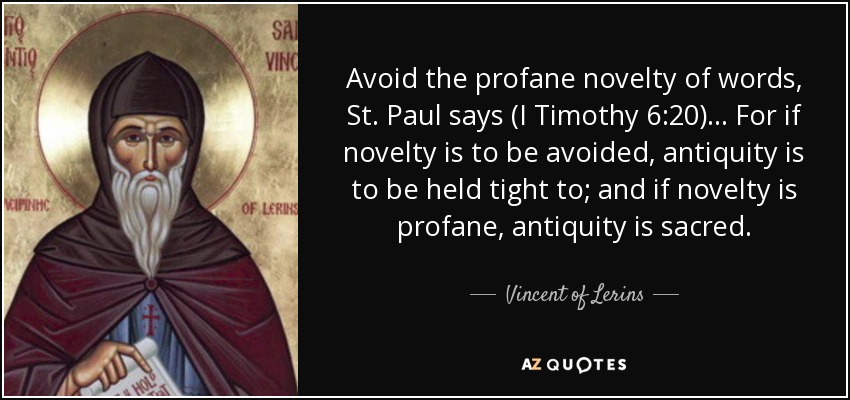
The Decretum Gratiani, also known as the Concordia discordantium canonum or Concordantia discordantium canonum or simply as the Decretum, is a collection of Canon law compiled and written in the 12th century as a legal textbook by the jurist known as Gratian. It forms the first part of the collection of six legal texts, which together became known as the Corpus Juris Canonici. It was used by canonists of the Roman Catholic Church until Pentecost (May 19) 1918, when a revised Code of Canon Law (Codex Iuris Canonici) promulgated by Pope Benedict XV on 27 May 1917 obtained legal force.
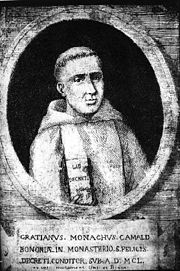
Gratianus
“Summa sedes a nemine iudicetur, NISI a fide devius inveniatur” :
“the Highest See cannot be judged by anyone,
unless he has been found deviating from the faith”
Jurist Raoul Naz states that it is not “judging” in strict sense but in the large sense: the Church (sain part of the teaching Church, the bishops who are not heretic) will not judge properly but the Church can note that a pope has deviated from the faith and by this fact IS fallen from the See.
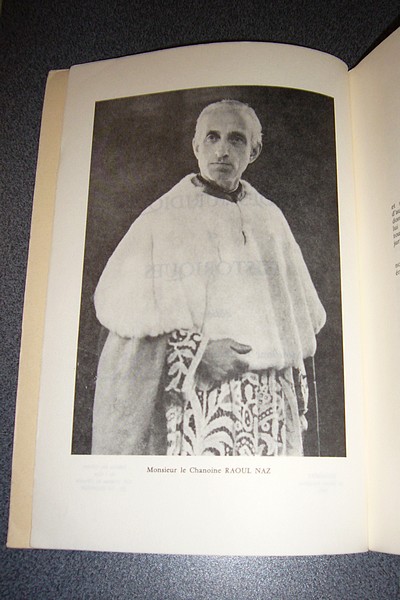
Prof. Dr. Raoul NAZ
“The pope should not flatter himself about his power, nor should he rashly glory in his honor and high estate, because the less he is judged by man, the more he is judged by God. Still the less can the Roman Pontiff glory, because he can be judged by men, or rather, can be shown to be already judged, if for example he should wither away into heresy, because he who does not believe is already judged. In such a case it should be said of him:
‘If salt should lose its savor, it is good for nothing but to be cast out and trampled under foot by men.’” (Sermo 4)
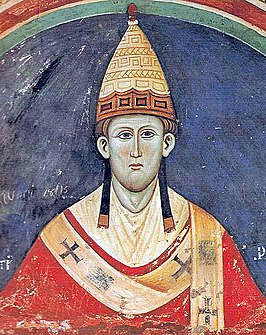
Innocentius III
We shall first see the teaching of the Doctors of the Church, whose writings the Church directs us to in a special way as theological teachers.
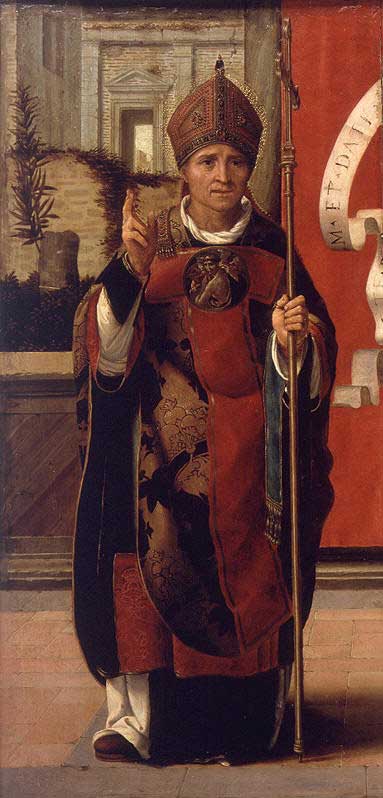
Saint Antoninus (1389-1459):
“In the case in which the pope would become a heretic, he would find himself, by that fact alone and without any other sentence, separated from the Church. A head separated from a body cannot, as long as it remains separated, be head of the same body from which it was cut off. A pope who would be separated from the Church by heresy, therefore, would by that very fact itself cease to be head of the Church. He could not be a heretic and remain pope, because, since he is outside of the Church, he cannot possess the keys of the Church.”
(Summa Theologica. Quoted in Actes de Vatican I)
Read more at Scaturrex >>
Monday, January 21, 2019
The Catholic Cultural Revival
 |
| Emmeline Deane, “John Henry Newman,” 1889 |
By Joseph Pearce
It is twenty years since the late, great John Paul II wrote his Letter to Artists and, as such, it is timely to remind ourselves of the power of Christian beauty to evangelize the culture in which we live. All but the most insensitive of men will admit to, and will admire, the great beauty produced by Catholic culture over the centuries. From the great art of Giotto, Michelangelo, Leonardo Da Vinci and Fra Angelico to the great architecture of St. Peter’s in Rome or Chartres Cathedral in France, the Catholic Church has bestowed upon humanity the most magnificent cultural edifices, all inspired by a love of the One True God who is the Greatest Artist of all. In the fields of music and literature, as much as in the fields of art and architecture, the genius of the Church has shone forth in the works of her creative children. From the simple serenity of Gregorian chant to the intricate integrity of polyphony and the rousing passion of Romanticism, from Palestrina, Thomas Tallis and William Byrd, to Bach, Mozart and Bruckner, the greatest sacred music continues to resonate in the hungry heart of man. And what is true of music, is equally true of literature. From Dante’s Divine Comedy and Chaucer’s Canterbury Tales in the glorious Middle Ages to the plays of Shakespeare during the throes of the iconoclastic Reformation, Catholic writers have produced truly great Christian literature, putting their words at the service of the Word.
Yet Catholic beauty does not only blossom in the brilliance of the Catholic Middle Ages or in the magnificence of the Catholic Counter Reformation, it blooms also in the midst of the desert of modernity. One of the most exciting and powerful manifestations of such beauty arose in the Catholic Cultural Revival in England over the past two centuries. From its genesis in the rise of English Romanticism at the end of the 18th century to its crowning achievements in the middle of the 20th century, the English Catholic Revival would produce some of the greatest artistic masterpieces of all time.
It all began with the disillusionment of certain English poets with the false promises of the so-called Enlightenment and age of Reason. Poets such as William Wordsworth and Samuel Taylor Coleridge were horrified by the mass murder, known as the Great Terror, that followed in the wake of the French Revolution. Although Wordsworth and Coleridge had initially been attracted by the French Revolutionary cause, the full horrors of its butchery and totalitarianism, carried out in the name of “reason” against religion, caused them to recoil in the direction of Christianity. Both poets rejected their youthful agnosticism and pantheism and embraced Anglican Christianity, expressing their rediscovery of beauty in what became known as Romantic poetry.
Read more at National Catholic Register >>
Sunday, January 13, 2019
Father Rutler: Extremism
 |
| Father George W. Rutler |
The foundational documents of our nation were influenced by Catholic political philosophers such as Aquinas, Suárez, Báñez, Gregory of Valencia and Saint Robert Bellarmine, who wrote before theorists like Hobbes and Rousseau. This contradicts a popular impression that democracy was the invention of the Protestant Reformation. Luther and Calvin considered popular assemblies highly suspect. The concept of the Divine Right of Kings, which was a prelude to what we call “statism” and “big government,” was systematized by the Protestant counselor to King James I of England, Robert Filmer.
For all his vague Deism, Thomas Jefferson might have acknowledged those Catholic sources, if obliquely, in his eloquent phrases. The Constitution’s First Amendment guarantee of the free exercise of religion and Article VI’s prohibition of religious tests for public office were developments rooted in the Thomistic outlines of human rights and dignity declared in the Magna Carta and the Declaration of Arbraoth.
This was lost on some senators who have violated Constitutional guarantees by subjecting judicial nominees to religious tests. One senator complained to a Catholic nominee for the Seventh Circuit Court of Appeals that “the dogma lives loudly within you.” Two other senators said that the President’s nominee for a federal district court in Nebraska was unsuitable because his membership in the Knights of Columbus committed him to “a number of extreme positions.” Members of their political party consider opposition to same-sex marriage and abortion “extreme.” This would characterize the Pope as an extremist, but at least he is not a judicial nominee.
In the Statuary Hall of our nation’s Capitol are sculptures portraying heroes who represent the best of the history and culture of each state. They include Saint Junípero Serra of California, Saint Damien de Veuster of Hawaii, Declaration of Independence signer Charles Carroll of Maryland, Father Eusebio Kino of Arizona, General James Shields of Illinois, Chief Justice Edward Douglass White of Louisiana, Father Jacques Marquette of Wisconsin, Patrick McCarran of Nevada, Dennis Chavez of New Mexico, John Burke of North Dakota, John McLoughlin of Oregon, Mother Joseph of the Sacred Heart Pariseau of Washington, and John Edward Kenna of West Virginia, all of whom were Catholic. These canonized saints, statesmen, soldiers, jurists and pioneers would be extremists unworthy of public office in the estimation of some current senators for whom subscription to natural law and obedience to the Ten Commandments are violations of what they fantasize as the norm of moral being.
The coruscating illiteracy of such senators burlesques reason. At every performance of Mozart’s Don Giovanni, audiences wait for the fifth scene of the second act, when the haunting statue of the Commendatore comes alive and knocks on the door to the sound of trombones. Would that all those statues of some of our nation’s greatest figures might come down from their pedestals and challenge the vacant minds of those inquisitorial senators to explain what constitutes extremism.
Subscribe to:
Posts (Atom)

